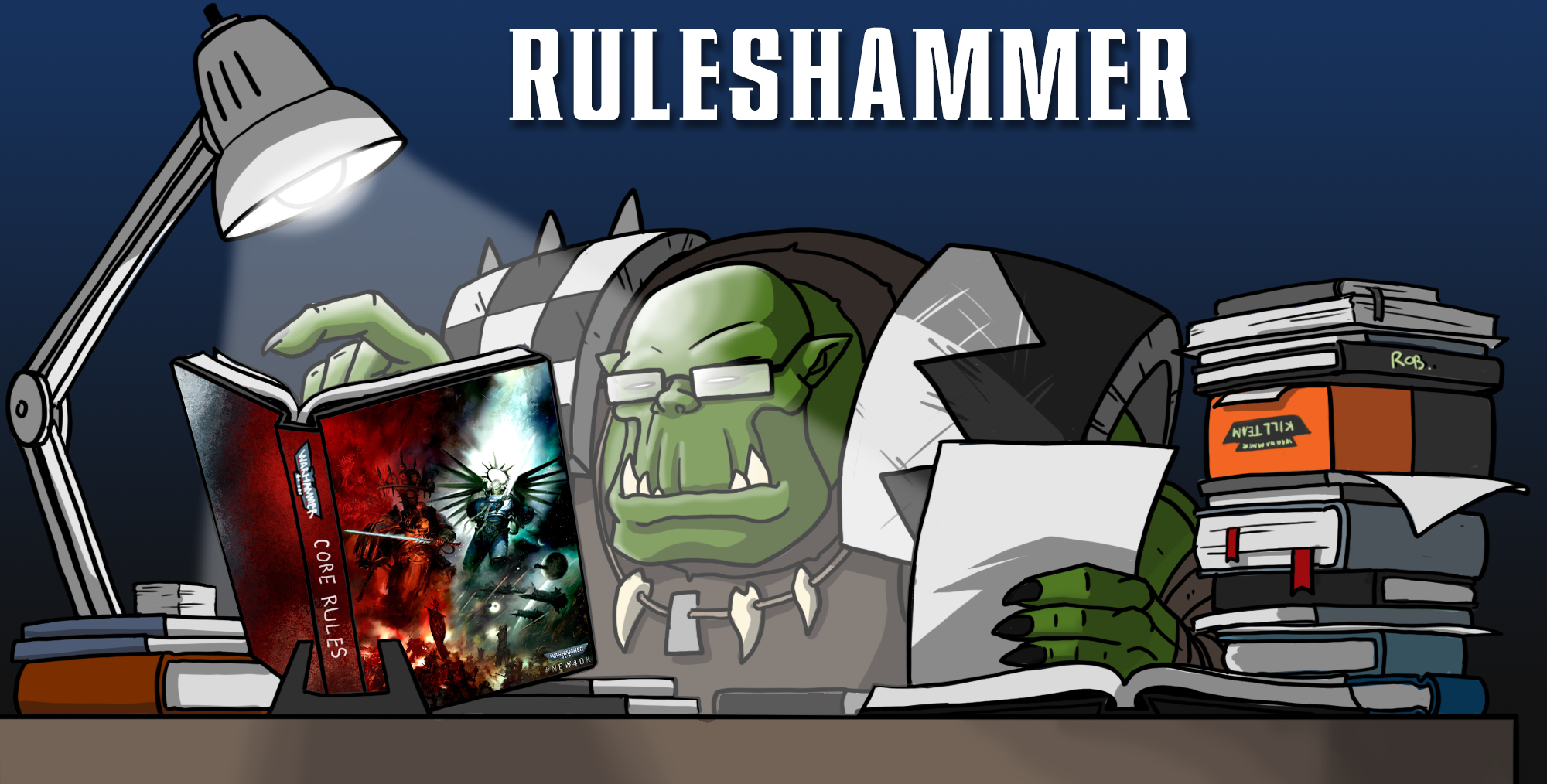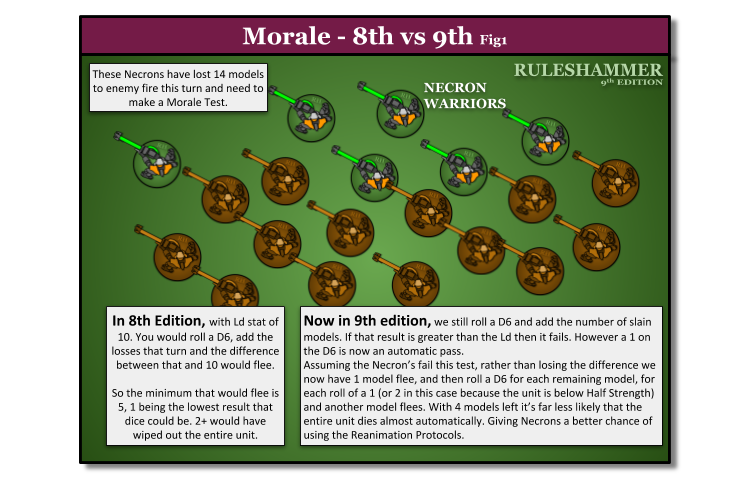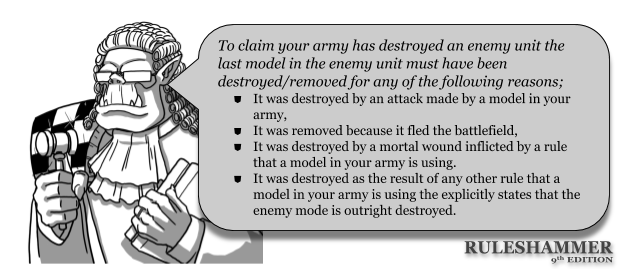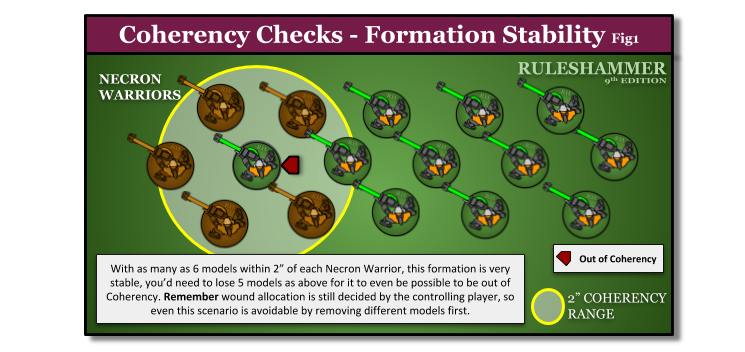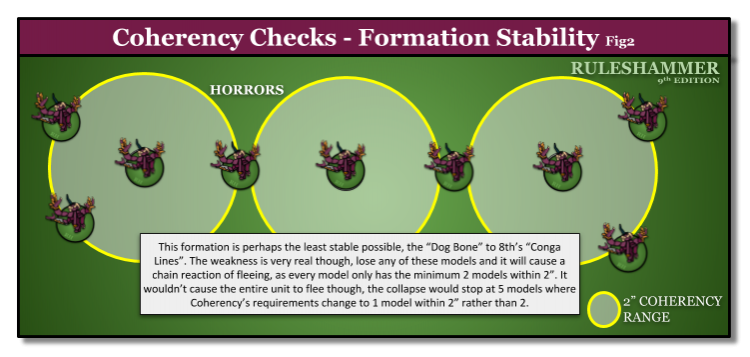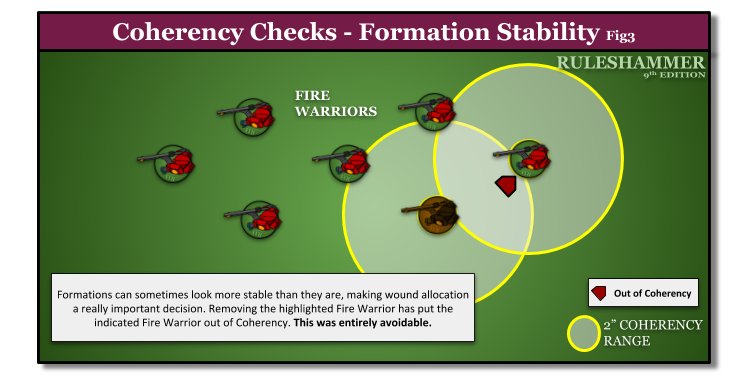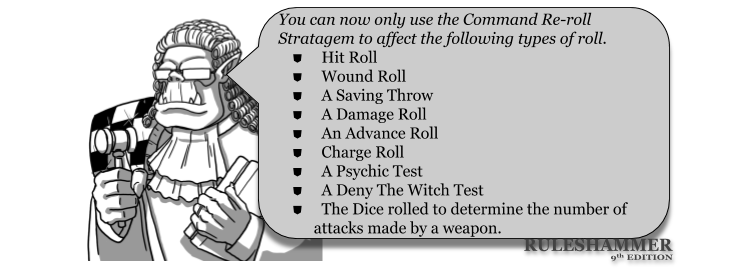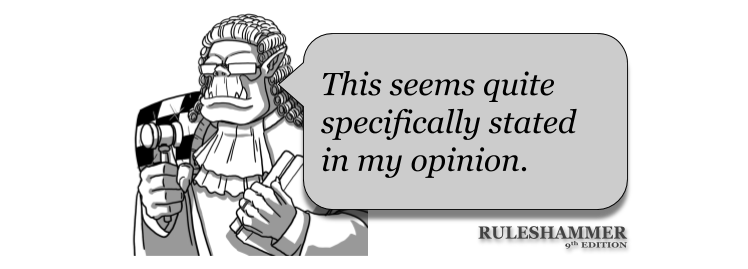With the new edition nearly upon us, we had Rob “Vre’kais” Chilton sit down with the new rulebook in the Indomitus boxed set and write his thoughts (in great detail) on the new rules – what’s changed, what needs clarification, and what you need to know. Ruleshammer will be doing daily posts over the next two weeks talking about key changes to the rules and going over each phase of the game.
The Morale Phase
Generally the morale phase has gotten less brutal in some places and more brutal in others, I want to break down each part.
Morale Tests
Out of the gate this is in my opinion a massive improvement as step one of the changes is to stop units reaching a point where they are automatically going to lose their remaining models to the morale test. The new test has been covered plenty but here it is one more time.
To take a Morale test, roll one D6 and add the number of models from the unit that have been destroyed this turn. If the result is equal to or less than the highest Leadership (Ld) characteristic in the unit, the Morale test is passed and nothing else happens. An unmodified roll of 1 also always results in a passed Morale test, irrespective of the total result In any other case, the Morale test is failed, one model flees that unit, and you must then take Combat Attrition tests for the remaining models in the unit (see opposite). [Core PDF Pg23, Book Pg233]
So this is all pretty familiar so far, one key change here is that a 1 always passes. The larger change is what comes next though if you fail the test.
Combat Attrition
Having failed the test you now check for losses to Combat Attrition.
If a unit fails a Morale test, then after the first model has fled the unit, you must take Combat Attrition tests. To do so, roll one D6 for each remaining model in that unit, subtracting 1 from the result if the unit is below Half-strength (pg 6); for each result of 1, one additional model flees that unit. You decide which models from your unit flee – those models are removed from play and count as having been destroyed, but they never trigger any rules that are used when a model is destroyed. [Core PDF Pg23, Book Pg233]
So what does this change?
Also we now have it clarified that if this process removes the last model of a unit then this counts as being destroyed by the enemy unit.
Hammer of Math covered how the new Morale Phases’s losses compare, as well as the effect the Ld modifiers will have in 9th.
Coherency Checks
This is entirely new and I have touched upon the basics of this but lets look at the what these rules create. The way I want to explain this is by discussing the stability a formation has, and I’m defining stability to how many models it can have removed by attacks before a Coherency check might be necessary. For some formations this might be the entire unit, for some formations it might be 1 model. Let’s look at some examples.
Stratagems
So there’s a few more core stratagemens in 9th that there were in 8th; some changed and some new.
Command Re-roll
So the Re-roll can now only be used to re-roll these types of roll.
The most significant aspect of this change is that for multiple dice rolls like charges or psychic you can no longer choose re-roll just the poorer of the two. This changes how much the CP Re-roll can affect these rolls the impact of that was covered in this Hammer of Math.
Insane Bravery
This strat remains and allows you to automatically pass a morale test but it’s now only usable once per battle so save it for that key test if you can. One thing to point out though is that it only lets you skip the Morale Test and therefore Combat Attrition, the unit still needs to do Coherency Checks.
Counter Offensive
Perhaps the least changed of the stratagems, or not changed at all even. This still lets you fight immediately after an enemy unit has just fought. What’s not clear though is if the ability to use this strat to have two fights in a row will remain possible. As in, if you use it right after the enemy fights with their last unit that charged this turn, you fight with your counter offensive unit next, and then using the new Fight Phase rules the first none charging unit to fight would be yours again. Hopefully this is cleared up by an FAQ.
Cut Them Down
Brand new for 9th this strat can be dicey if you have enough models but not always in the situations you might expect. I really like that the number of dice is dependent on the models taking swings at you though, unlike so many rules which are scaled based on the unit running away. The only limitation is that it’s a D6 for each model within Engagement Range which might not be as many as it could have been considering how much tighter a larger unit will need to be both for Coherency and to get attacks in with the reduced second rank range of being within ½” of a model from their unit within ½” of an enemy.
Desperate Breakout
A big blow to tripointing, and very similar to disembarking from a destroyed transport. You roll a one D6 for each model in the unit and each result of 1 kills a model of your choice. This is any model you choose, so you if you have a unit of 10 models you roll 10 dice together and remove as many models as you have 1s, exactly the same as you would for a destroyed transport.
So presuming you haven’t died so far you can now attempt a Fall Back move, but unlike a standard Fall Back where you are just permitted to move within Engagement Range, Desperate Breakout additionally gives you the ability to move through enemy models, allowing you to make good your escape. Hopefully that is – any models that now can’t make it out of engagement range are destroyed!
It’s useful to note that this is another rule that treats:
“move across models as if they are not there”
…and:
“can be moved within Engagement Range”
…as separate abilities, making it clear you need both to be able to move through enemy units with impunity.
Emergency Disembark
This Stratagem is already causing some confusion because the Transport rules say this;
Unless specifically stated, abilities have no effect on units while they are embarked, and Stratagems cannot be used to affect units while they are embarked [Core PDF Pg12, Book Pg 210]
However the first line of the Emergency Disembark Strat says
Use this stratagem when a TRANSPORT model from your army is destroyed. All units embarked within can be set up wholly within 6” of the destroyed model.
So what does this strat do? The first part I’ve already quoted is that it lets you disembark wholly within 6” rather than the usual wholly within 3” for 9th. However in exchange for this extra range the unit will lose models on rolls of 1 or 2 rather than just 1s. It’s still your choice which models are lost though so it’s not a 1 in 3 chance that it kills a specific model, which would really suck if the transport has any characters inside.
Overwatch
One of the “they wouldn’t” “they did” changes for 8th edition is making Overwatch into a stratagem. Off the bat this not only means Overwatch has a cost in CP it also limits it to once per turn.
Unless your army is Tau, who can still Overwatch as they did in 8th.
Morale and Stratagems Conclusions
Both the sets of changes here add more decisions for players, and the new version of morale both makes things a lot less binary and adds design space for future abilities.
Have any questions or feedback? Got a rules question you want answered? Drop us a note in the comments below, ask a question in our Ruleshammer form, or head over to r/ruleshammer to discuss.
